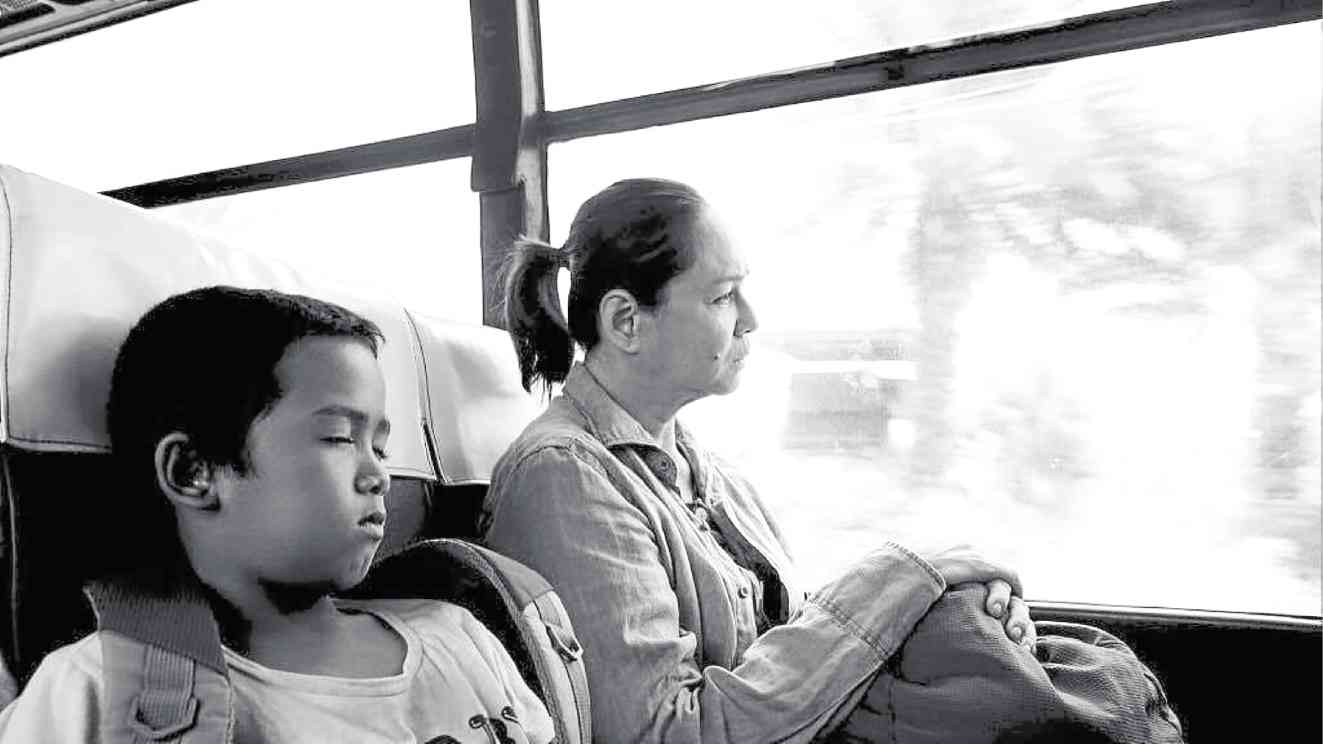US critics praise Lav Diaz’s ‘epic, richly rewarding’ ‘Humayo’

Charo Santos-Concio (right) in “Ang Babaeng Humayo”
The reviews are in, and they are nothing short of “epic,” as the New York Times and the Village Voice put it.
In time for its limited theatrical run in the United States this month, Lav Diaz’s “Ang Babaeng Humayo” is greeted with lavish praise from various mainstream critics.
Diaz often makes lengthy films that are deemed, with more than a tinge of trepidation, by most US reviewers as “marathon” sessions.
In a May 18 article, however, the New York Times’ A.O. Scott points out that the Filipino film, which won the Golden Lion in Venice last year, “is carefully composed and hauntingly beautiful to behold.”
And what does length have to do with it? Absolutely nothing, as far as Scott is concerned: “It is long and slow-moving, but at nearly four hours, it feels less like a test of your endurance than an appeal to your appetite for character, incident and emotion.”
Article continues after this advertisementScott notes that it is “more portrait than tableau… [bringing] to the screen a character who is at once elusive and unforgettable.” That character is named Horacia and is “played with exquisite understatement” by actress-turned-media executive Charo Santos-Concio.
Article continues after this advertisementIn sum, Scott remarks that Diaz’s latest film is “devastating… [it] makes uncompromising demands on your attention and empathy. But it is also illuminating and, in its downbeat, deliberate way, exhilarating.”
Village Voice’s Ela Bittencourt is just as effusive. In a May 16 review, Bittencourt calls “Humayo” “a brooding, existentialist noir… a story of solidarity and redemption.”
Bittencourt notes that “Diaz marries his sweeping narrative arc with supreme visual restraint.”
The critic asserts that while Diaz’s “long takes can slip into pedestrian mode,” there is “suppleness to his night photography”—singling out the “rich chiaroscuros [that] evoke noirish dread.”
In a May 17 essay, Entertainment Weekly’s Chris Nashawaty likens Diaz’s body of work to “marathon tone poems.”
Diaz’s brand of “pure cinema,” however, is “set in dirty streets and back alleys where his country’s poor, forgotten people struggle to scrape their way to the next day.” It presents a rather unvarnished portrait of the Philippines “as a place without either a safety net or compassion for its lost souls… The only succor comes from small acts of empathy.”
Nashawaty concedes that “Humayo” “may not be a movie for everyone, but if you allow yourself to settle into its leisurely tempo… it can be a richly rewarding experience.”
In spite of all these glowing reviews, Diaz remains pragmatic and introspective. “It’s humbling,” he tells the Inquirer. “Art has answers… to all the hard work, to the long struggle for greater aesthetics and for greater cinema, to the issue of noncompromise.”
He sees a glimmer of hope in the deluge of accolades. “The world is open to different cinemas now, to divergent perspectives and forms in this medium. The film is four hours long and [yet] it opened in selected cinemas all over the US. It is still running in Europe.”
It is a significant development, indeed. “Kahit papaano, nakakatulong sa pagbubukas ng mga pinto para sa atin. Para sa mas malawak na pang-unawa sa kultura natin. (It somehow helps in opening doors for us. For a wider understanding of our culture.)”